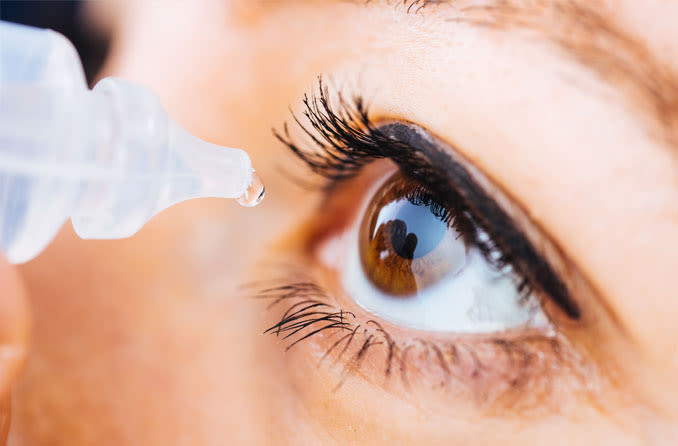
Eye drops were the subject of multiple FDA warnings and recalls in 2023. First, an artificial tears product was found to be blinding and killing people, through contamination with a drug-resistant bacteria. Later the FDA warned consumers not to use over two dozen brands of eye drops, as their investigation led to an inspection of the manufacturing facilities in India where staff were preparing these supposedly sterile products without gloves, gowns or even shoes. In September, the FDA wrote to several manufacturers, stating they were marketing ophthalmic drug products in violation of federal law. Building on additional recalls for eye drops, the FDA summed up 2023 with a “What You Should Know about Eye Drops” release last week which uses uncharacteristically blunt language. In addition to general advice about choosing over-the-counter products carfully, it specifically warns against using any ophthalmic products that are labelled as homeopathic, stating that these products should not be marketed.
Samuel Hahnemann invented the homeopathy in the early 1800s. While the practice of medicine slowly progressed to a scientific model based on objective observations, homeopathy never progressed or evolved: it remains frozen in prescientific thinking. Homeopathy is based on the idea that “like cures like”, in that a small dose of what causes a symptom can actually cure that symptom. Like-cures-like is simply sympathetic magic, a pre-scientific belief. Homeopathy proponents also believe that water has memory, and the more you dilute a substance, the more powerful its effects. The 30C “potency” is a common dilution used in homeopathy – that’s a dilution of 10-60. If something has been diluted this much, you would have to give two billion doses per second, to six billion people, for 4 billion years, to deliver a single molecule of the original, pre-diluted material. The result of all this dilution is that most homeopathic remedies are completely inert, and don’t contain a single molecule of the original reference material. And that original reference material can range from table salt to sunlight to vacuum cleaner dust. There is no product so bizarre that homeopaths haven’t made a remedy out of it. None of these products have actually been demonstrated to provide actual medicinal effects. They are pure placebo.
The regulation of homeopathy regulation in the United States differs from prescription or over-the-counter drug products. For decades, despite their regulatory status as “drugs”, the FDA largely ignored homeopathic remedies, allowing any homeopathic remedy recognized in traditional homeopathic references to be marketed, without any FDA pre- or post-market approval. As the FDA itself notes,
There are no FDA-approved products labeled as homeopathic; this means that any product labeled as homeopathic is being marketed in the U.S. without FDA evaluation for safety or effectiveness.
The FDA’s guidance, Homeopathic Drug Products from 2022 describes how the agency will prioritize regulatory action for these products. It’s clear that homeopathic eye drops do not meet the FDA’s standard. Here is a statement from a warning letter issued to homeopathy manufacturer Boiron earlier this year:
We recognize that your “Optique 1 Eye Drops” product is labeled as a homeopathic drug with active ingredients measured in homeopathic strengths. Under section 201(g)(1) of the FD&C Act, 21 U.S.C. 321(g)(1), the term “drug” includes articles recognized in the official Homeopathic Pharmacopeia of the United States (HPUS), or any supplement to it. Homeopathic drug products are subject to the same statutory requirements as other drugs; nothing in the FD&C Act exempts homeopathic drugs from any of the requirements related to adulteration, misbranding, or FDA approval.
Despite this guidance, homeopathic eye products continue to be sold. Naturaleyecare.com describes common homeopathic “ingredients” in eye drops for cataracts, such as:
- Cineraria Maritima to “supports circulation in the eye” (this is the plant silver ragwort)
- Euphrasia (another plant, eyebright)
- Causticum for “eye pain” (this is potassium hydrate)
- Sepia for “glare, spots, veiled vision, streaks of light blurring the vision” (I think this is a pigment extracted from cuttlefish).
- Calcarea phosphorica for “blurry vision and pain from tired eyes” (calcium phosphate)
- Calcarea fluorica for “blurry vision, cataract, opacity of the cornea” (calcium fluoride)
It’s worth noting that while there is no evidence any of these ingredients would be useful to treat cataracts, there is also no evidence (and even less plausibility) that diluting these ingredients repeatedly with water would somehow make them effective.
Eye care product? Read the label carefully
Given the number of recalls, it’s important to choose your eye care product carefully. I am not normally one to recommend brand-name products when generics exists, but it’s perhaps worth noting that none of the recalled products came from the major vision brands. At minimum, avoid any product labelled homeopathic. Also avoid any product marketed to treat serious eye conditions such as glaucoma, cataracts, retinopathy or macular degeneration, as none of these products are approved as over-the-counter drugs. The FDA also warns against products containing silver sulfate or argentum, which can permanently change the white color of your eyes. There are also illegally marketed products that are labelled to contain methylsulfonylmethane (MSM). There is also a helpful website, Are my eye drops safe? which can be used to check if the product you’re considering is subject to any FDA warning or recall.
